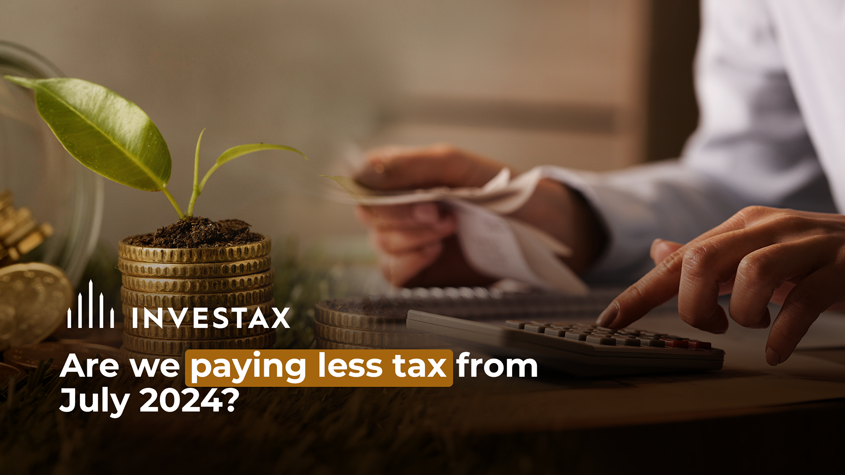Are we paying less tax from July 2024?
Paying Less Tax From July 2024
Australia is on the brink of a major change in its tax system come July 2024. Currently, we have five tax brackets, and the first $18,200 of a person’s income is tax-free. The proposed stage three tax cuts, which are waiting for parliament’s approval, are stirring up quite a debate. Many believe these changes will mainly benefit those with higher incomes. These tax cuts could alter how much tax we pay and who benefits most from the system, leading to a significant shift in Australia’s approach to taxation. Here is everything you need to know about the stage three tax cuts.

What is the Stage Three Tax Cuts?
The Stage Three Tax Cuts, set to take effect from July 1, 2024, are a significant overhaul of Australia’s tax system. Currently, workers face a progressive tax structure: they pay 19% on income between $18,201 and $45,000; 32.5% on income from $45,001 to $120,000; 37% on income from $120,001 to $180,000; and the highest earners, those making over $180,000, pay 45%.
However, these changes will consolidate the 32.5% and 37% tax brackets into a single 30% bracket. Additionally, the threshold for the highest tax bracket, currently at 45%, will increase from $180,000 to $200,000. This means that post-July 2024, the majority of Australian taxpayers (over 95%) will be taxed at a marginal rate of 30% or less.
2023-24 tax rates
| Index | Taxable income | Cumulative tax liability | Marginal tax rate |
| 1 | $0 | – | 0% |
| 2 | $18,200 | – | 19% |
| 3 | $45,000 | $5,092 | 32.50% |
| 4 | $120,000 | $29,467 | 37% |
| 5 | $180,000 | $51,667 | 45% |
Stage 3 tax rates
| Index | Taxable income | Cumulative tax liability | Marginal tax rate |
| 1 | $0 | – | 0% |
| 2 | $18,200 | – | 19% |
| 3 | $45,000 | $5,092 | 30.00% |
| 4 | $200,000 | $51,592 | 45% |
To illustrate, let’s consider Bob, an IT professional earning $130,000 per year. As of now, Bob, falls into three different tax brackets:
- He pays no tax on the first $18,200.
- He pays 19% on the income between $18,201 and $45,000.
- He pays 32.5% on the income between $45,001 and $120,000.
- Finally, he pays 37% on the income between $120,001 and $130,000.
With the Stage Three Tax Cuts, starting from July 1, 2024, Bob’s tax situation simplifies:
- No tax on the first $18,200 remains the same.
- He will pay 19% on the income between $18,201 and $45,000.
- He will pay a unified 30% rate on the income above $45,000, up to his total salary of $130,000.
Let’s calculate the exact amount of tax Bob will pay in the fiscal year 2024-2025, assuming the Stage Three Tax Cuts are approved.
Under the current tax system, Bob would pay approximately $33,167 in taxes for the fiscal year 2024-2025. However, if the Stage Three Tax Cuts are approved and implemented, his tax liability would reduce to approximately $30,592 for the same period.
What will be my Tax Savings?
According to the table below, the Stage Three tax cuts are poised to provide significant tax relief for middle to high-income earners. Conversations with clients suggest these cuts could also have a positive effect on such income groups. Many parents, especially mothers returning to work, often express that high earnings seem futile when a large portion goes towards taxes and childcare. These tax cuts could serve as a welcome incentive for them to re-enter the workforce.
Tax Liability
| Income | 2023-24 index | 2022-23 | Stage 3 Index | 2024-25 | Difference |
| $40,000 | 2 | $4,142 | 2 | $4,142 | – |
| $50,000 | 3 | $6,717 | 3 | $6,592 | $125 |
| $60,000 | 3 | $9,967 | 3 | $9,592 | $375 |
| $70,000 | 3 | $13,217 | 3 | $12,592 | $625 |
| $80,000 | 3 | $16,467 | 3 | $15,592 | $875 |
| $90,000 | 3 | $19,717 | 3 | $18,592 | $1,125 |
| $100,000 | 3 | $22,967 | 3 | $21,592 | $1,375 |
| $110,000 | 3 | $26,217 | 3 | $24,592 | $1,625 |
| $120,000 | 4 | $29,467 | 3 | $27,592 | $1,875 |
| $130,000 | 4 | $33,167 | 3 | $30,592 | $2,575 |
| $140,000 | 4 | $36,867 | 3 | $33,592 | $3,275 |
| $150,000 | 4 | $40,567 | 3 | $36,592 | $3,975 |
| $160,000 | 4 | $44,267 | 3 | $39,592 | $4,675 |
| $170,000 | 4 | $47,967 | 3 | $42,592 | $5,375 |
| $180,000 | 5 | $51,667 | 3 | $45,592 | $6,075 |
| $190,000 | 5 | $56,167 | 3 | $48,592 | $7,575 |
| $200,000 | 5 | $60,667 | 4 | $51,592 | $9,075 |
| $210,000 | 5 | $65,167 | 4 | $56,092 | $9,075 |
| $220,000 | 5 | $69,667 | 4 | $60,592 | $9,075 |
| $230,000 | 5 | $74,167 | 4 | $65,092 | $9,075 |
| $240,000 | 5 | $78,667 | 4 | $69,592 | $9,075 |
| $250,000 | 5 | $83,167 | 4 | $74,092 | $9,075 |
Why Stage Three Tax Cut is so Divisive?
The debate over the Stage Three tax cuts is deeply rooted in its intricate political background and the significant consequences it carries.
Initially passed by the Morrison government with the support of Labor following the 2019 election, Labor, however, vowed not to reverse this policy in the 2022 elections.
Set to be implemented from July 1, 2024, there were discussions in the Labor party, while in opposition, about potentially lowering the income threshold for the new 30% tax rate from $200,000 to $180,000.
More recently, Treasurer Jim Chalmers has reignited discussions about the feasibility of these tax cuts, even hinting at potential changes in the upcoming federal budget scheduled for October 25.
Meanwhile, figures like Greens leader Adam Bandt and various independent lawmakers have advocated for abandoning the Stage Three cuts altogether, highlighting that they disproportionately favour higher-income individuals. This claim is supported by an analysis from the Parliamentary Budget Office, requested by the Greens, which indicates that nearly half of the tax cuts’ benefits would go to the top 3.6% of earners, those making over $180,000.
In conclusion, the Stage Three Tax Cuts represent a significant shift in Australia’s taxation landscape, poised to impact taxpayers across various income brackets. As we’ve explored, these changes bring both opportunities and challenges, making it crucial for individuals and businesses to understand how they will be affected. Navigating the complexities of tax reform is no small feat, and staying informed is key to making the most of these changes.
Our team of experts at Investax can offer valuable insights and strategic tax planning tailored to your unique financial situation, ensuring that you are well-equipped to capitalise on the potential benefits of the Stage Three Tax Cuts. Don’t let the complexities of tax reform catch you unprepared. Contact Investax Group today to explore how we can help you understand these changes and plan effectively, potentially reducing your tax liabilities even further.
Reference
Federal budget: What are stage three tax cuts, and who will get them? (afr.com)
Taxable income before and after Stage 3 tax cuts (taxinstitute.com.au)





